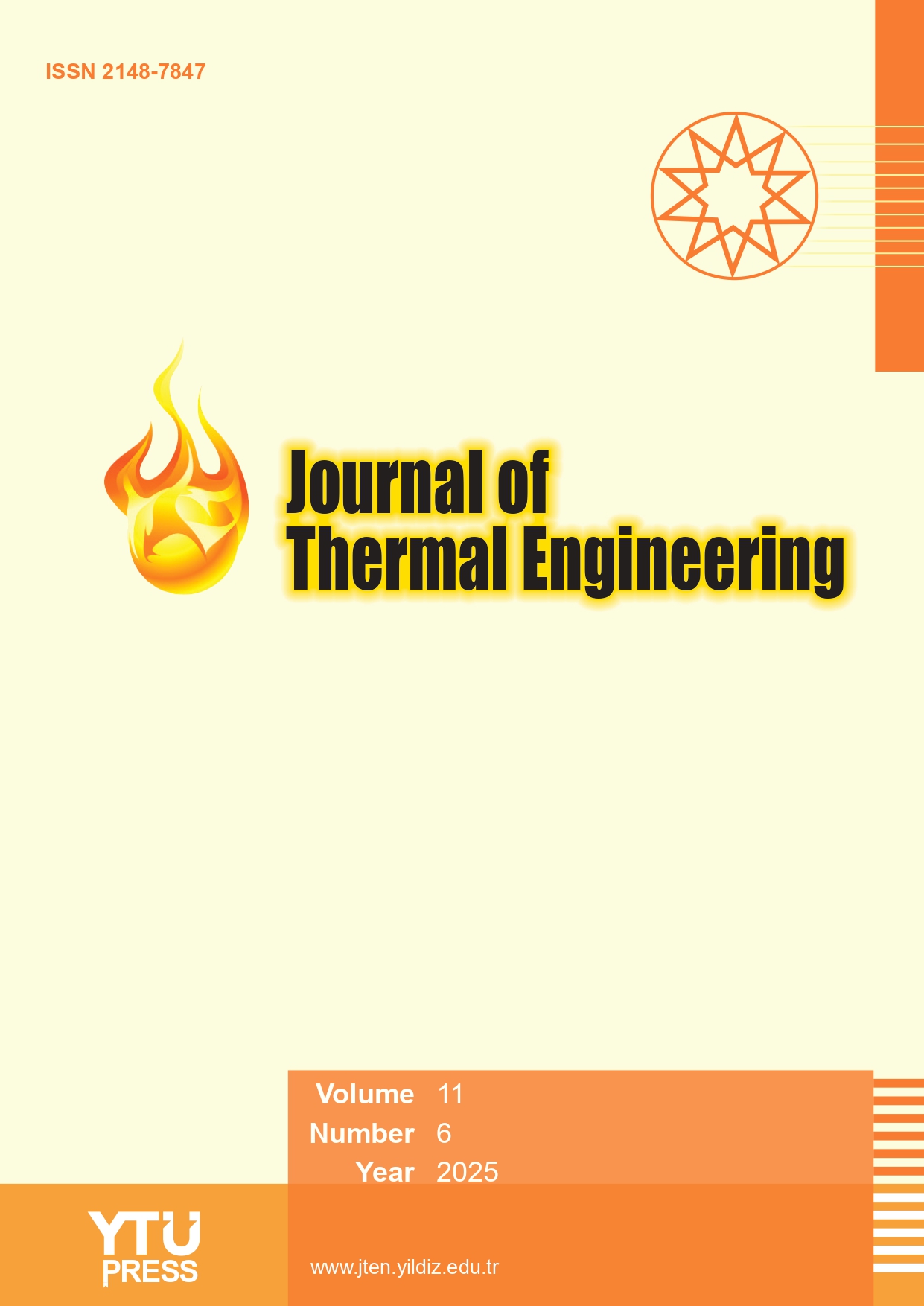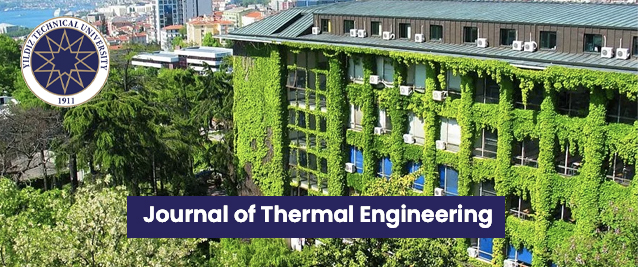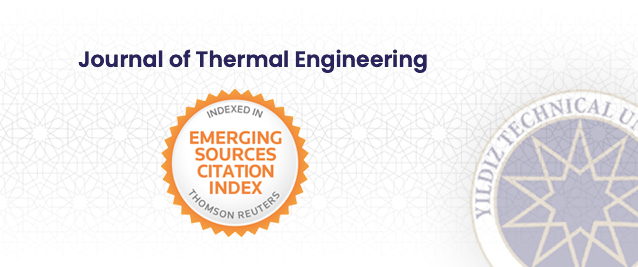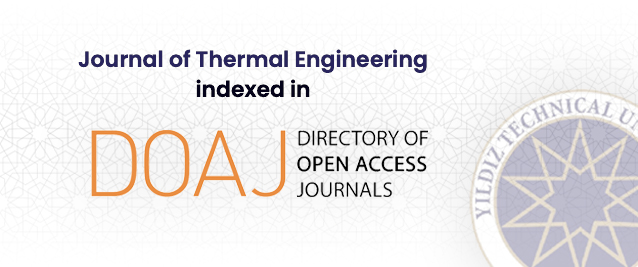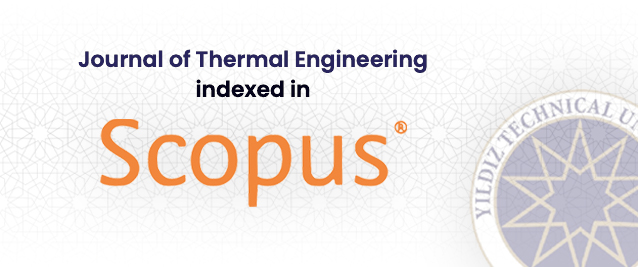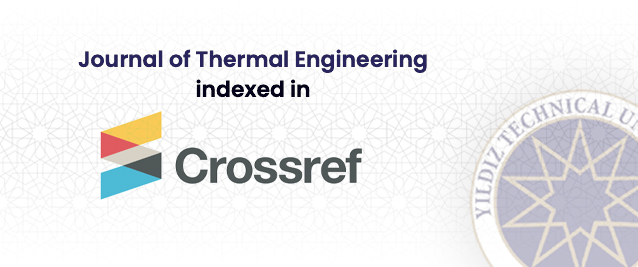2Department of Mechanical Engineering, Netaji Subhas University of Technology, New Delhi, 110078, India
Abstract
The cylindrical shape of objects has always been preferred by thermal engineers as a means of transferring heat, owing to their compact design and high surface-to-volume ratio. Additionally, fins were commonly used over the surface of a cylinder to enhance heat transfer even further by providing a larger surface area for heat dissipation. Therefore, this work investigates the effect of perforated annular fins, protruded from a hot vertical cylinder, on heat transfer performance due to free convection. This conjugate heat transfer study was performed for three Rayleigh numbers (Ra = 0.68 × 107, 1.37 × 107, and 1.8 × 107) in a laminar flow regime. The study involved varying numbers of fins (ranging from 3 to 7) along the cylinder height, resulting in different fin pitch to cylinder diameter ratios (S/d = 2, 2.4, 3, 4 and 5.8). The fluid flow and energy equations were solved using ANSYS Fluent to understand the correspondence between heat transfer and flow behavior. The grid dependence test and the data validation with published work were successfully performed. The Nusselt number is observed to increase with the increase in Rayleigh number, up to 41.75%, irrespective of the number and type of fins used. The heat transfer enhancements due to perforated fins are found to be higher than those without perforations. The maximum augmentation in Nusselt number is found to be 49% in case of the highest number of perforated fins as compared to solid fins, corresponding to an S/d ratio of 2 and a Ra of 1.8 × 107. Conversely, the minimum enhancement in augmented Nusselt number is 20% for an S/d ratio of 5.84 and Ra of 0.68 × 107. The flow characteristics are found to be in commensurate with the heat transfer results.


